Importance of Context for SEO: More Text is not Better Context
This guest blog about Contextual Search and corresponding SEO A/B Case Study comes our way from Koray Tuğberk GÜBÜR, Founder at Holistic SEO & Digital.
Contextual Search is searching on the web based on the different contexts for the same queries. A query can deliver different results on a rainy, or sunny day. A search engine results page design can change from winter to summer, or even from morning to evening.
The latest search trend increases and search demand changes can hint a Search Engine for a new meaning for a query, and a Search Engine can process a query for different search intents based on possible contexts. Contextual Search Engine understands different contexts on a web page, image or text content, web page sections or user’s historical query log, and last search attempts.
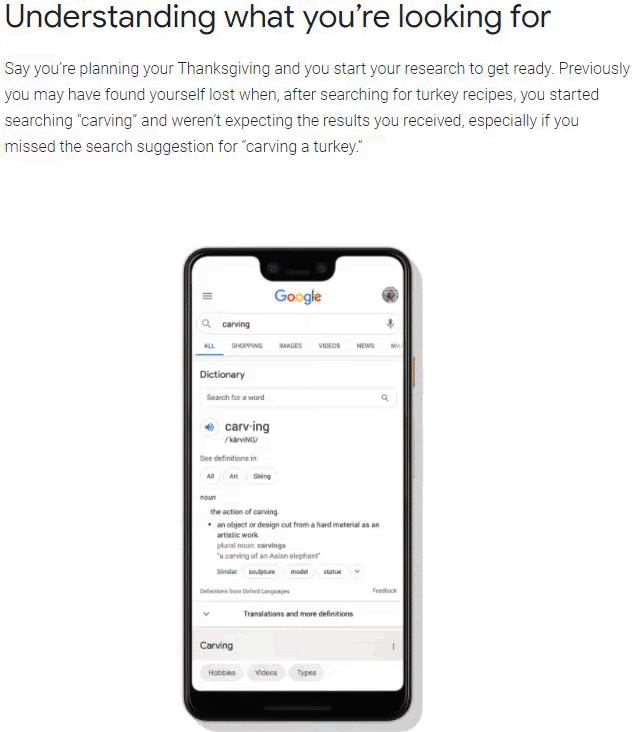
Conversational, Conditional, and Contextual Search Engine Features and an SEO Case Study for Context Signals will be told in this article. By reading Google’s official announcement for Contextual Search, the reader can acquire a pre-information to understand this article.
Thus, providing a better Context for an HTML Document for a Contextual Search Engine and Contextual Search Engine User is a helping factor for Search Engine Optimization. Context Specifying and Context Sharpening can be used for signaling a better relevance and possible Click Satisfaction for the users on the SERP. Thus a Search Engine can give a better place to a source (domain) on the SERP, and a source can provide a better value proposition for the Search Engine in terms of canonical and minor search intents.
The author of this SEO Case Study is Koray Tuğberk GÜBÜR, a brief summary for Koray Tuğberk is below.
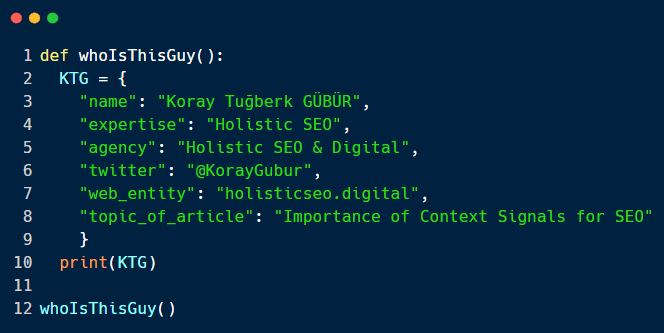
Koray Tuğberk GÜBÜR is the founder and owner of Holistic SEO & Digital. Koray focuses on Data Science, Search Engines’ Decision Trees along with Technical SEO, and Content Marketing. He publishes new SEO Case Studies, A/B Tests, and articles regularly.
In this article, Context Sharpening, Specifying, and Importance Context Signals for SEO and an SEO A/B Test Process and Results with Concrete Sample Examples will be shared for Context Specifying and Context Sharpening for a SERP Document.
What is Contextual Search?
Contextual Search puts the context of the moment of search behavior into the center for evaluation and ranking of the results. With contextual search, the user’s intent and context are taken into account to fetch the most relevant set of results.

Sample 1 for the last 8 weeks comparison: %36,66 Click Increase, 33% Impression Increase, 1,42% increase for Average Position, 35% Ranked Query Count Increase.
What is a Contextual Search Engine?
A Contextual Search Engine (Topical Search Engine) can relate queries and documents to each other according to the context of the need behind the search behavior. In some cases, a Contextual Search Engine is called a Semantic Search Engine or Understanding Search Engine. Because context can be used for relevance and quality-based document ranking only if a ranking system can understand the queries, entities in queries, users’ situation. Thus, Semantic SEO has emerged as another vertical of Search Engine Optimization.

Sample 2 for the last 8 weeks comparison: 100% Click Increase, Impression Increase 201%, Average Position 42,49% Increase, Ranked Query Count 110% Increase.
A contextual search engine can take the factors into account below.
- Demography
- Device
- Weather
- Time
- Date
- Location
- Geography
- Mood (Walking, Running, Driving)
- Last Visited Places (Actual Physical Addresses)
- Last Listened Songs
- Last Bought Travel Tickets
- Last Bought Products
- Last Watched Movies
- Last Watched Videos
- Last Visited Websites
- Last Entered Queries
- User’s Face Impressions
- Background Noise
- Background Music
- User’s Voice Tone
- User’s Search Frequency
- User’s Last Queries
- User’s Last Downloaded Files
- User’s Calendar Situation
- User’s Browser
- User’s Last Emails
- User’s Last Messages
- User’s Last Calls
- Open Browser Tabs
- Entities
- Attributes of Entities
- Taxonomy of Things
- Ontology of Things
- Related Phrases
- Co-occurrence of Things
- Natural Language Processing for Queries and Documents
- Information Extraction and Retrieval for Documents
- Word Types such as Hypernyms, Hyponyms, Holonyms, Meronyms, Antonyms
- Sentiment Structure of Documents and Queries
- Query-independent Features such as Document Sections, Visual Elements on a Document, and Source Attributes
- Semantic HTML Tags, Internal and External Links, Mentions
- Bookmarked URLs by Users for Sources
- Extensions of documents
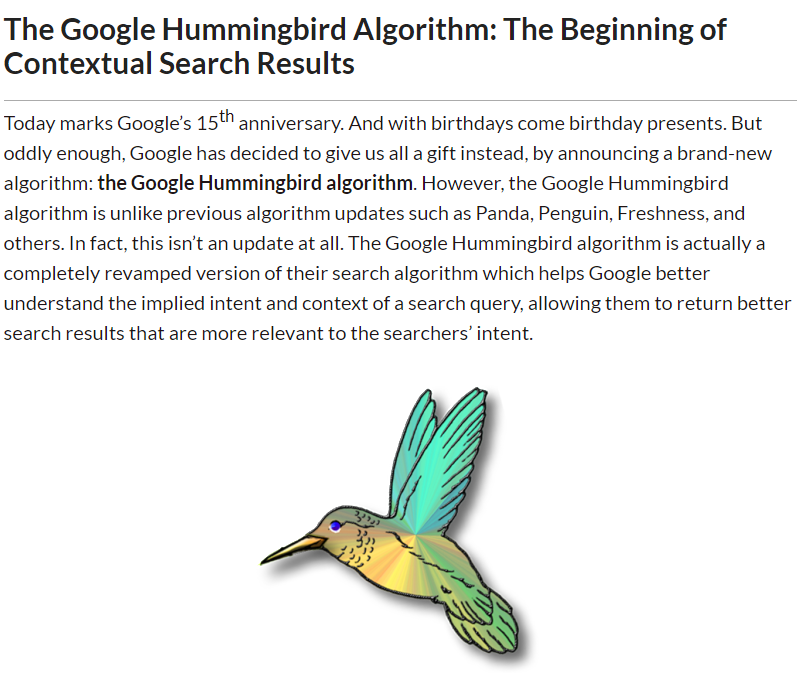
An article from 2013, Hummingbird is to relate phrases to each other to understand the search intent, this helped Google to decrease the importance of string matching while improving the importance of context. To learn more about Hummingbird Update.
For any Search Engine, there are millions of possible algorithm variations with thousands of different data dimensions and featured for an endless amount of samples. For getting the best results for specific users, and users’ moods, the search engine can adjust their algorithms to give different weights to the different data dimensions.

Sample 3 Last 8 Weeks Comparison: 96,04% Click Increase, 203% Impression Increase, 38% Average Position Increase, 96% Ranked Query Increase.
For a Contextual Search Engine, Lexical Similarities and String Matching are from a previous age. The important task is merging all of these meaningful and human-centric metrics for creating a context to deliver better, more relevant search results to the users.
What are the Query-dependent Context Sharpening Elements for a Search Engine?
Query-dependent factors means the factors that can only be affected by the query typed by the user. For instance, a query can change its character according to some examples below.
- Entity-seeking queries include an entity within them to extract information.
- Question-formatted queries for getting a specific answer, usually end up with a featured snippet.
- Disambiguous queries are usually short and include a core term within them to start the journey.
- Queries that include time, these queries usually look for fresher results such as news, or stock prices.
- Queries for historical events, usually have certain trend waves as regular for special occasions.
- Queries for slander, these queries usually seek unofficial and untrustworthy information, they can be filtered by the search engines for protecting the individuals.
And, there are thousands of different types of queries for a Search Engine. Usually, SEOs differentiate queries as “Transactional”, “Informational”, “Navigational”, “Commercial”, “Local”, but Search Engines need to think way more carefully.

Sample 4 for Last 8 Weeks Comparison: Click Increase 45%, Impression Increase %84, Average Position Increase 32%, Query Count Increase 66%.
For instance, a user can type an “Entity-seeking query” right after an “ambiguous query”, in this context, the Search Engine can relate the ambiguous query to the “Entity-seeking query”, and the core term of the “ambiguous query” can be an attribute for the related entity in the future. Thus, a Contextual Search Engine can relate queries and visited documents according to the query-dependant factors in this way. And, a Search Engine can categorize queries, connect phrases to each other in different contextual levels and hierarchies.
To understand Topical Authority and Contextual Domains, you can read this detailed article.

Sample 5 for the last 8 weeks: Click Increase 40,15%, Impression Increase 63.70%, Average Position Increase 17,58%, Ranked Query Count Increased 54% for the 1-3 Results (Total Ranked Query Count decreased because the Entity has an “animal name” within it, and when we specify and sharpen the context, these irrelevant queries have been removed while the relevant ones increased the organic traffic performance.)
Besides, a query relating, a Search Engine also rewrote a query to understand the need behind the search, in other words, the search intent. Thus, a query can be understood better by the search engine. To rewrite a query, the Search Engine can check the entities, phrases, query history, and user’s historical query logs to generate questions. The most relevant rewritten query is called the canonical query for the contextual search engine.

Search Engines can adjust People Also Ask Questions for different sub-contexts.
What are the Query-independent Context Sharpening Factors for a Search Engine?
Query-independent context sharpening factors for a search engine are the factors that belong to the web pages, users’ devices, browsers, date, time, location, and weather.

Sample 6 for Last 28 Comparison: Click Increase %38,42, Impression Increase 35%, 26% Increase for Average Position, 62% Query Count Increase.
Context Sharpening query-independent factors help a Search Engine to understand the search intent better by providing more context related to the user’s personality and short-term agenda. Some Context Sharpening examples for a Search Engine based on query-independent factors.
- If a user searches for a mountain holiday resort while with his family, a Search Engine can rank family resorts before romantic holiday resorts.
- Or, if a user searches for a mountain holiday resort right after buying a tennis racket, a Search Engine can give more contextual weight to the holiday resorts with tennis courses within a mountain.
- If a user searches for a holiday resort in a mountain with a tennis court to go with his/her family for March, the related places can be ranked according to the reviews only for March. And, a Search Engine can focus on the foot traffic for only March to deepen and sharpen the context.
- If a user searches for a holiday resort in a forested mountain with a tennis court to go with his/her family for the last week of March only if it is sunny, and if the user bought a ticket for a flight to the location, the foot traffic, reviews can be filtered further for the last week of March and also only for the days with sun, and search engine can give more weight to the holiday resorts that are close to the airport only if they are also close to or in the forest.
In this context, there are lots of different contextual layers, and queries for these layers or between these contextual layers for too many similar and possibly different search intents.

Sample 7 for the Last 28 Days: 100% Click Increase, Impression Increase 46,49%, Average Position Increase %18,9, Ranked Query Count %32 Increase.
In these examples, mountains, forests, airport locations, sun, tennis courts, tennis rackets, having a family, having an intensity during March are not related to the queries, they are directly related to real-world situations. And, these can’t be controlled.

Sample 8 Comparison for Last 28 Days: %6 Click Increase, 135% Impression Increase, 50,09% Average Position Increase, 95% Query Count Increase.
In terms of SEO, most of the Query-independent context sharpening factors are not in the control of SEOs such as weather, location, and time. Thus, query-independent context sharpening factors can be categorized as, controllable and uncontrollable.
In this context, the uncontrollable query independent context sharpening factors can help an SEO to adjust its SEO Project’s position and situation for increasing the organic search performance. For instance, Local SEO or Seasonal SEO (SEO for a seasonal event) are in this group. In Local SEO, an SEO might not change a business’ location, but it can improve the radius of the business within the map-based search queries by increasing the prominence of the business. And, an SEO can check the demography, geography, and personality of the audience of the website for adjusting the content writing style and content distribution.
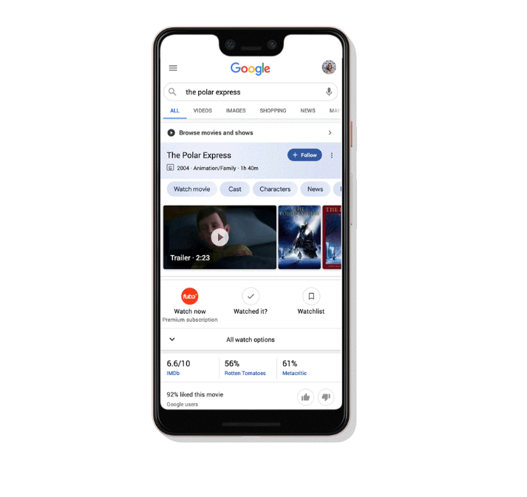
Google can unite different and sequential query logs to unite different contexts for a more precise SERP creation, and these contextual gaps and context variations are opportunities to increase the SEO Performance by improving the context signals for Context Sharpening.
The most important context-sharpening factors for a Search Engine can be found in query logs and SERP document content. Therefore, the next section will be about Contextual and Context Sharpening Elements on Web Pages for Search Engines.

Sample 9 for the last 8 weeks: 1600% Click Increase, 215% Impression Increase, 20.7% Average Position Increase, Ranked Query Count 22% Increase.
How Can Google Understand Contextual Elements on a Web Page?
Query-independent contextual elements on a web page help a Search Engine to understand the context of the web page, and possible query-document matching possibilities better.
Contextual Elements on a Web Page can be in the form of text, image, function blocks, and HTML Tags. A Search Engine can understand the purpose of the web page from the content on it, and it can understand its quality from the user logs, external links, and references, along with the design elements or source attributes.

Sample 10 Comparison for Last 28 Days: Click Increase 16.39%, Impression Increase 148%, 54.4% Average Position Increase, 110% Query Count Increase
A Search Engine can understand a web page with anchors, internal and external links, targets and sources, headings, titles, visual design elements, function blocks, user and query logs, text and images, along with the order of the content sections, or amount of the content sections.
A Search Engine can cluster different but similar types of documents to understand their unique sides and generate question-answer-pairs from their documents. These clusters can be used for related search query predictions, People Also Ask Questions, Related to Carousels, and question-answer matching along with query auto-complete predictions.

Sample 11 for the last 8 weeks: Click Increase 168,33%, Impression Increase 84%, Average Position Increase 23,16%, Ranked Query Count Increase 5%.
An SEO A/B Test and Case Study for Context Specifying and Context Sharpening
For context specifying and context sharpening, SEO A/B tests can be performed with detailed text, image content along with an organized visual design and code structure. In this context, during the article, I have shared some sample URLs from an SEO A/B Test that I have performed for the 8 weeks.
During the SEO A/B Test and Case Study, I have added question, and answer pairs to the specifically chosen URLs. In normal conditions, these web pages have only one “H1” heading, and they have only one explanatory sentence without a proper internal link within the main content.

Sample 12 Comparison for Last 28 Days: Impression Increase 332%, 66% Click Increase, 78% Average Position Increase, 42% Query Count Increase
After the explanatory sentence, we have a clear visual answer for the users in different X (Industry Subject) codes, X (Industry Subject) types, and X (Industry Subject) images. But for all of the industry, this stack of main content full of codes, types, and images does not provide enough context to the search engines. In the next section, you can find the methodologies for improving the context clarity of a web page and sub-sections of a web page.
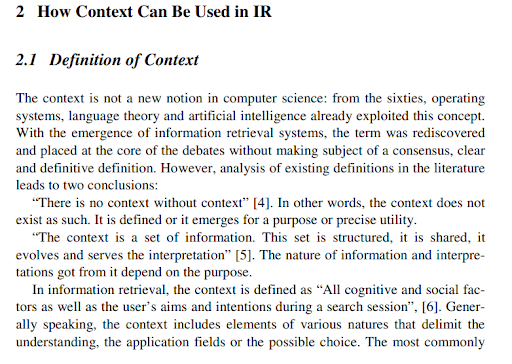
A nice section from the book of Abdelkrim Bouramoul, Mohamed-Khireddine Kholladi, and Bich-Lien Doan for the Contextual Search. IR here means Information Retrieval, according to the context, IR output and score can be changed.
What is the Methodology of the Context Sharpening SEO A/B Test?
Methodologies to Improve the Context Specificity for Search Engines for this SEO A/B Test:
- Added more related phrases into the HTML P Elements.
- Added more related entities into the related Industry Subjects.
- Added more internal links to the main content.
- Created a Contextual Hierarchy for the sub-questions and answers. In other words, I have added more relevant questions within a prominence and importance hierarchy based on logic.
- Used sentences that comply with Natural Language Processing.
- Given the clear answers without any unnecessary words.
- Didn’t repeat the evidence or the answer.
- Didn’t use any unnecessary and irrelevant questions to not dilute the Context of the Content.
- Used Semantic HTML Elements.
- Used Information Extraction.
Gibberish Score is another important term for SEO, if a web page includes lots of sentences without any actual answer or information, the page might have a higher gibberish score. And, any irrelevant sentence, heading, question, or image can dilute the Context. In this context, Context Sharpening and Context Diluting are opposite to each other.

Sample 13 for the last 8 weeks comparison: Click Increase 50%, Impression Increase 230%, Average Position Increase 2,7%, Ranked Query Count Increase 16%.
Concrete and Personalized Explanations for Context Sharpening for the SEO A/B Test
In this context, for every industry subject type, code, image a dedicated section has been created with an actual heading and question. For every question related to the sub-context of the industry subject, a semantic and symmetric answer has been given in a convenient way to Natural Language Processing.
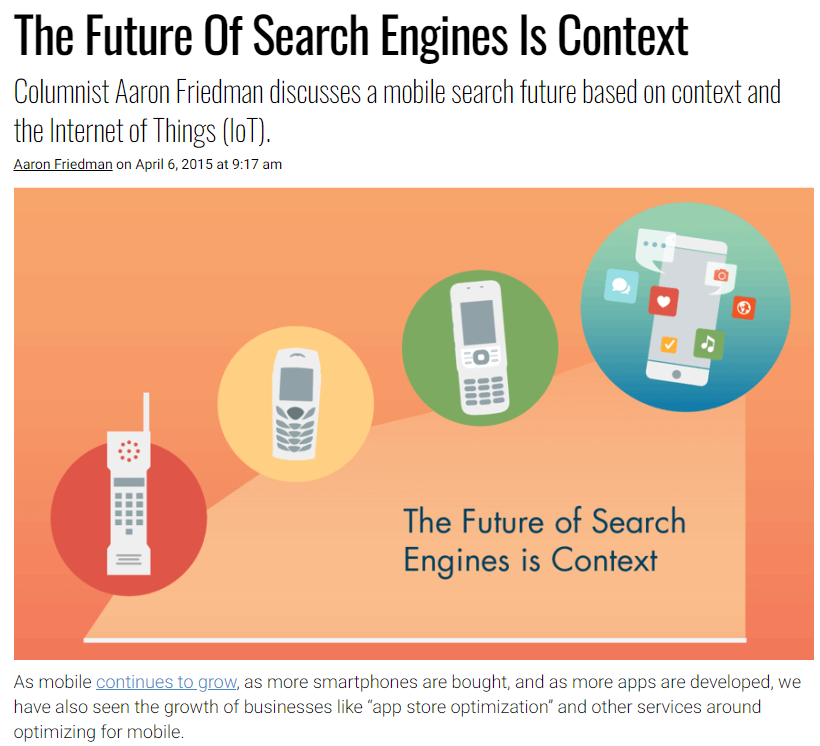
Related entities and visual design elements for the related sub-sections have been added. Since, the web pages became longer, to give a better context clarity to the sub-sections and a scroll-to-text feature, a table of content has been used with URL Fragments. To keep changes consistent and more testable, every sentence has been adjusted in the best way to trigger a Featured Snippet for the specific section, and Semantic HTML Elements helped for having a better SERP exposure and web page clarity.

Sample 14 Comparison for Last 28 Days: Impression Increase, %154, Click Increase %76, Average Position Increase %15, 46% Ranked Query Count Increase
Every information extraction point, and every clear sentence with a definitive, and direct answer with the actual information have provided a better relevance, confidence, and context. Since, all of the sentences were semantic and symmetric across every sample, changing the sentences and audit the results again was easier too.
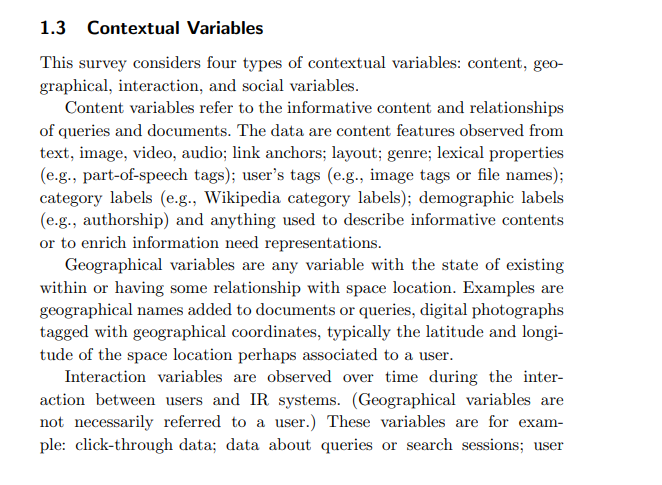
Contextual Variables are the dimensions of context for a document, and it can modify the output of the IR System.
What are the Most Common Errors for the SEO A/B Tests?
The most common errors for SEO A/B Tests are below.
- Time: Not waiting enough to get solid results.
- Reranking Triggering: Not making the big enough changes to get feedback from the search engine.
- Not creating enough samples: Making changes only for a few URLs.
- Not Consistent Changes: Not making changes consistent during the samples.
- Not Important: Making changes for the unimportant pages.
- Data Irregularities: Not paying attention to the data anomalies.

Sample 15 for the last 8 weeks: Click Increase 31,88%, Impression Increase 90,63%, Average Position Increase 22,04%, and 36,66% Ranked Query Count Increase.
How did Context Sharpening SEO A/B Test Avoid the Most Common SEO A/B Test Mistakes?
During the Context Sharpening SEO A/B Test, all of the common SEO A/B Test mistakes have been avoided as below.
- Chosen 100 URLs for having more samples.
- Waited for 8 weeks to have solid results.
- Changed every web page by more than 70%.
- Have chosen web pages that have actual traffic and are important for the Search Engine and the website.
- Performed consistent changes across every web page, even all of the sentences in the contents were symmetric and semantic.
- Chosen the best possible season for the SEO A/B test, and checked query trends, newsworthy events for having healthier Context Sharpening SEO A/B Test Results.

Sample 16 for last 8 weeks comparison: 18% Click Increase, 83% Impression Increase, 23% Average Position Increase, %24 Ranked Query Count Increase.
What are the Possible Data Anomalies for Context Sharpening SEO A/B Test?
Data Anomalies are problems that blur the data and its meaning for a specific timeline and features. In the SEO A/B Test context, a data anomaly can cause data differences between the reality and measured data. For every SEO A/B Test, there is always a data anomaly possibility that might dilute the results for getting insights.
Some of the common SEO A/B Test data anomaly types are listed below.
- Sudden search-demand increase due to search trends, newsworthy latest events
- Broken analytics tool configurations such as Google Tag Manager, Google Analytics, Adobe Analytics
- Search Engine-side data measuring bugs
- Having more than one server without synchronization
- Not excluding the data for behavior of users from the Local IP address of the company
- Sudden and Unknown Search Engine Algorithm Updates
- Search Engine-side Ranking, Indexing, and Ranking Bugs

Sample 17 for the last 8 weeks: Click Increase 123,99%, Impression Increase 89,42%, Average Position Increase 31,46%, Ranked Query Count Increased 100% for 1-3 Results while decreasing in total.
During the Context Sharpening and Context Specifying SEO Case Study and A/B Test, all of these data anomaly possibilities have been observed and controlled as below.
- Due to the Super Bowl, there has been a search demand and search data anomaly, thus I have waited until the search behaviors come back to normal.
- During the SEO A/B Test, Search Engine algorithm updates have been observed.
- Search Engine-side possible measurement bugs and analytics configuration audited.
During the analysis of Importance of Context for SEO via Context Sharpening SEO A/B Test, possible data anomalies have been avoided with these methodologies.

Sample 18 for the last 28-day comparison: 18.35% Increase for Click, 122% Increase for Impression, 21,97% Increase for Average Position, 102% Increase for Query Count.
Effects of Context Sharpening for SEO Performance
Results for the Context Sharpening SEO A/B Test have been acquired after 8 weeks in a solid way. During the article, every image with the name of the “Sample” is to show the results and effects of the Contextual Relevance’s Effect for SEO. Every context signals, and Topical Relevance signals increase the Confidence and Relevance Score for the possible search intents for these queries.
A brief result summary for the Context Sharpening SEO A/B Test is below.
- 150% – 332% Organic Impression Increase
- 20% – 80% Organic Click Increase
- 46% – 142% Organically Ranked Query Increase
- 1-5 Organic Average Position Increase
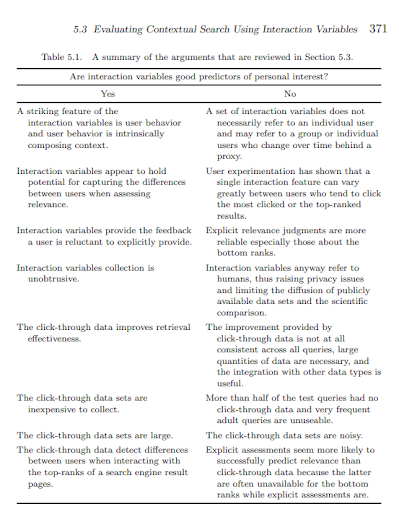
Evaluating Contextual Search Using Interaction Variables by Massimo Melucci
LaMDA and MuM Announcements from Google
LaMDA and MuM are two different announcements made by Google during the 2021 Google I/O. Multitask Unified Model and Language Model for Dialogue Applications are two conversational, contextual, and topicality related language models of Google. MuM is to relate two different search queries for the complete two different but sequential topics. In this context, Prabhakar Raghavan gives the example of “Hiking in Fuji Mountain”, a user searching for hiking, also might need a new boot. And, in this context, Google can filter sources, and let users be more expressive during future possible searches.
On the other hand, LaMDA is to relate topics from different languages for the same entities and translate the language with the same information. Google says that LaMDA is to understand the topical transition during a dialogue or search journey. At this point, Context Sharpening, Topical Relevance, Coverage, Authority become more important.
At the beginning of the article, I have given the example of the “Conversational Search” and “Contextual Search” announcements of Google from 2019. And, LaMDA, MuM announcement has been made by Google, after I write this article. Thus I have added this section after I finish writing this article to show the importance of Context for a Search Engine more. Understanding the Semantics and context of things are the most important features of the human brain. And, a search engine that powers the intelligence of users can have longer, more detailed, granular, and expressive queries to answer. That’s why Context Specifying, Context Sharpening, and Contextual Relevance are important for SEO.

A search engine user can use the visuals for specific queries within different contexts. Thus, adding more images, sections and related answers will help to improve the context of documents for different audiences, possibilities.
Last Thoughts on Context Specificity and SEO Potential for Sources
Every web page and every query term have contextual gaps that are not specifically said. Filling these contextual gaps within the queries will result in more precise Search Engine Results, more detailed People Also Ask questions, and more specific query auto-complete predictions by Search Engines.

Sample 19 for the last 8 weeks: 35,97% Click Increase, 143% Impression Increase, 31% Average Position Increase, 110% Ranked Query Count Increase.
Filling contextual gaps within a document in the form of text, image, visual design, and web page layout will help a Search Engine to relate the document with more possible and precise search intents for the variations of the same queries. To fill the contextual gaps within a Document, an SEO can generate different and close questions based on a logical hierarchy, the important point here is not the search volume, it is the logical relevance for the queries and searches intents.

A Contextual Gap means that there is a hole between the sections of the web page, or the context of the web page section is not specifically shown to the Search Engine. Thus, using clear answers, questions, images, visual design elements, consistent and meaningful code structures, URL Fragments for specific sections, semantic sentences for every paragraph with unique and valuable information within an order for describing the things that users seek is important.

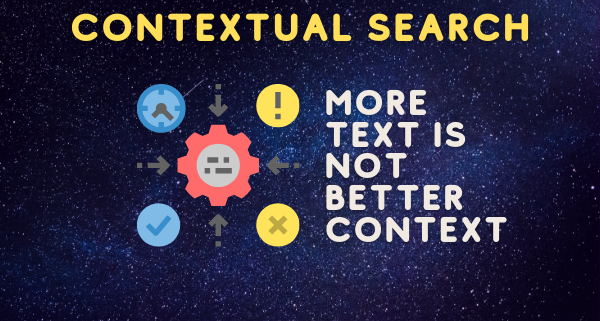
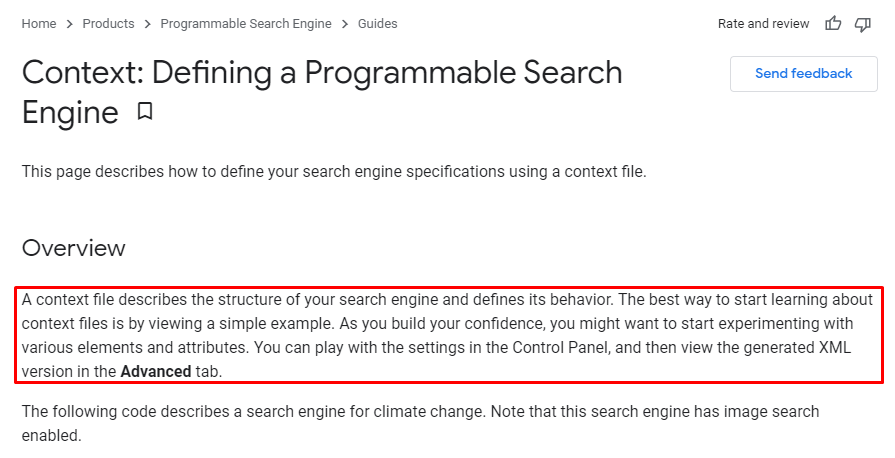
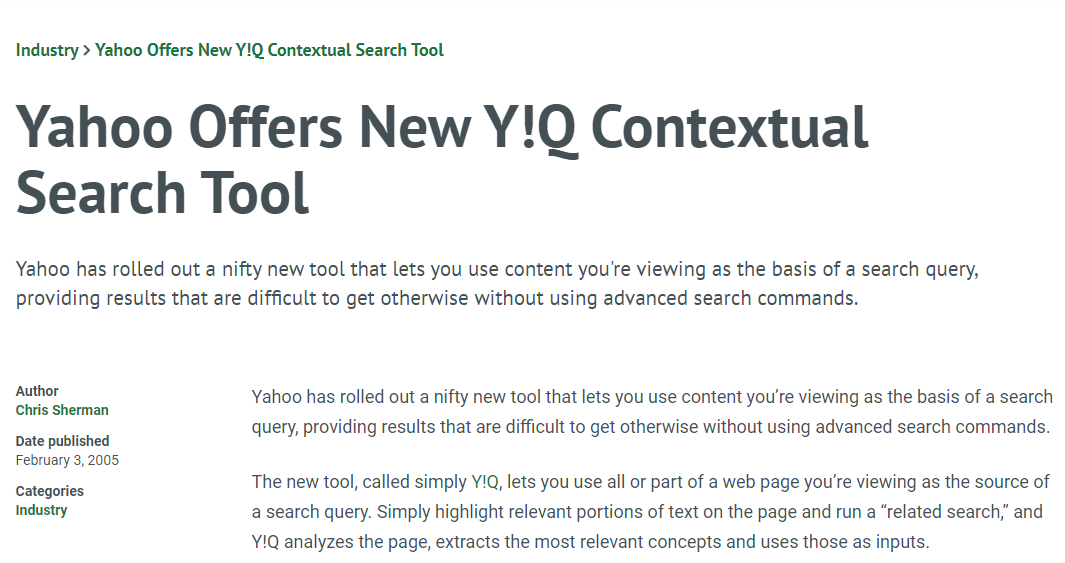
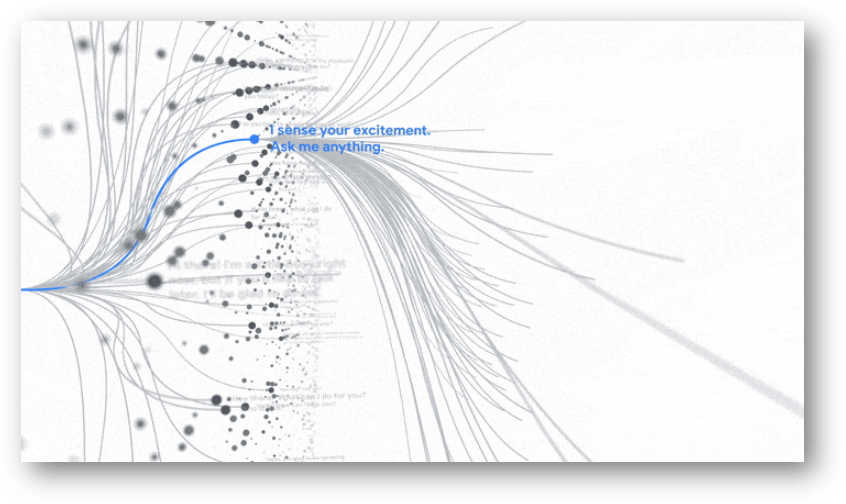



Another great article Koray. This is the first time I’ve come across the concept of Gibberish Score but it makes total sense since Google also has an Information Gain Score.
And I suppose you could correlate the Information Gain Score with Word Count to get an idea of the Gibberish Score a page has.
Very well presented. Every quote was awesome and thanks for sharing the content. Keep sharing and keep motivating others.
Thanks for sharing another great article by Koray.
He’s one smart dude, isn’t he? Happy to have some of his insights here to share. Thanks for coming by!
Koray has taught me how to think differently. I have one experience in SEO, But following Koray makes me feel like I need to shift my thinking how I understood SEO. We should think like Engineers I like the Mindset.
Thanks for reading. And yes, I completely agree, Koray thinks differently and he’s been changing the game in SEO. Have a great rest of your day!